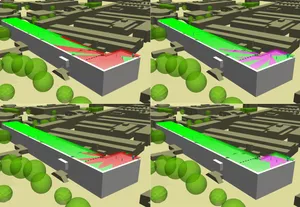Pollutant Dispersion and Air Quality

Dispersion of air pollutants within urban areas is crucial for the well-being of the residents of every development. With increased environmental awareness and the generation of atmospheric pollution, all developers must comply with specific environmental criteria. The main purpose of Pollutant Dispersion and Air Quality assessments is to support the planning application of new developments regarding air quality requirements and air ventilation regulations and assess mitigation measures for improving air quality within developments and outdoor recreational areas and parks.

With numerical modelling of air pollutant dispersion and air ventilation, re-entry of exhaust gases or entry of highly polluted air into air-conditioning system inlets can be assessed, potentially leading to reduced air quality or increased requirement for filters and air purifying equipment. Also, exhaust gases dispersion from fume cupboard exhausts, standby power generators, cogenerator systems, power stations, carparks, and dispersion of air pollutants emitted from road traffic (vehicle exhausts) within bus stations, high and motorways can be assessed. Furthermore, the propagation and spreading of odour from sources such as fume cupboard exhausts, kitchens, chemical processes, sewerage effluent, and treatment ponds can be modelled and successfully tested.




